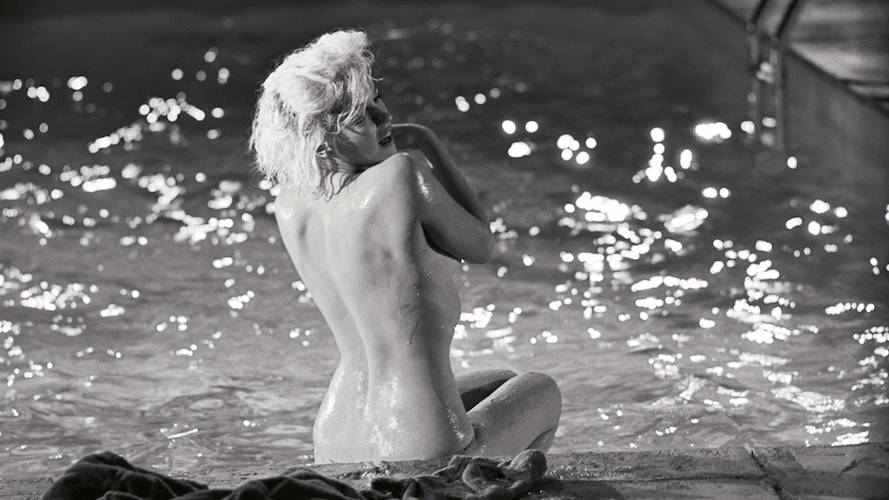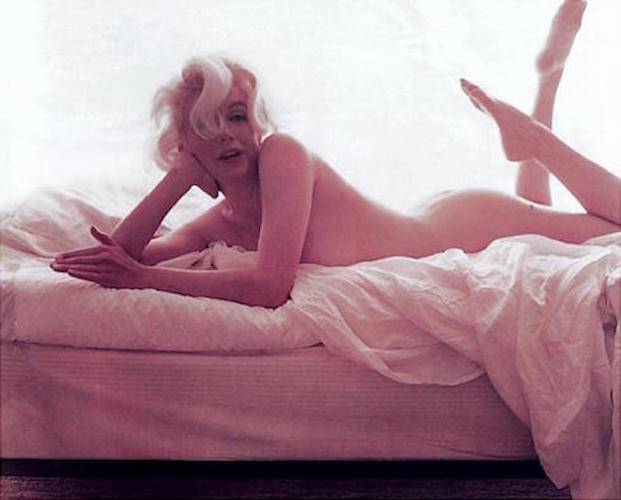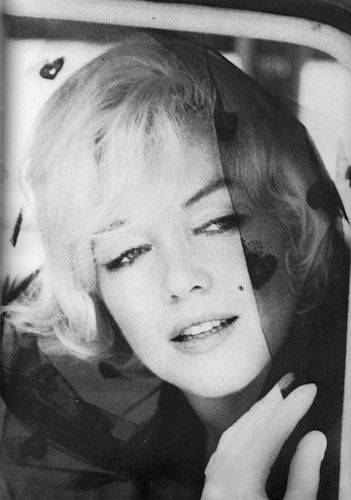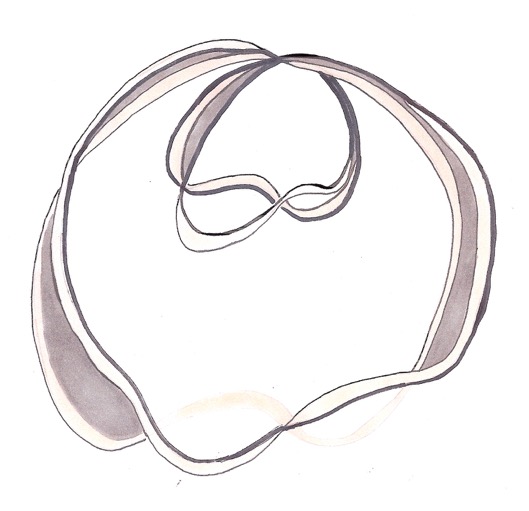German ARCE ROSS. Paris, October 2011, July 2016
ARCE ROSS, German, « Misfire suppletions in Marilyn Monroe’s Case », Nouvelle psychopathologie et psychanalyse, PsychanalyseVideoBlog.com, 2011, 2016.
 We know that, under certain conditions, psychotic patients may develop enormous creation abilities in a field that naturally imposes in their lives. But before they can use it as a basis for the development of a suppletion, this trend goes far beyond the limits necessary for a minimum balance, becomes quite dangerous, and often takes over from delusions and hallucinations, leading the subject to be locked up more and more until, sometimes, passing to the suicidal act. This is a regressive enjoyment of confused creation and often useless lying between delirium and act. This last may probably be expressed more accurately when delirium cannot respond alone by its self to the renewed collapse of the experience of love; bankruptcy, which is the work of white factors in the current catastrophic love. However, it is precisely at this crossroads and from that material that we can and must find a convergence paradoxically allowing the construction of a true suppletion. We will see below some of the psychological processes that will be present in the necessary connection between love and creation.
We know that, under certain conditions, psychotic patients may develop enormous creation abilities in a field that naturally imposes in their lives. But before they can use it as a basis for the development of a suppletion, this trend goes far beyond the limits necessary for a minimum balance, becomes quite dangerous, and often takes over from delusions and hallucinations, leading the subject to be locked up more and more until, sometimes, passing to the suicidal act. This is a regressive enjoyment of confused creation and often useless lying between delirium and act. This last may probably be expressed more accurately when delirium cannot respond alone by its self to the renewed collapse of the experience of love; bankruptcy, which is the work of white factors in the current catastrophic love. However, it is precisely at this crossroads and from that material that we can and must find a convergence paradoxically allowing the construction of a true suppletion. We will see below some of the psychological processes that will be present in the necessary connection between love and creation.
However, there are also some patients that are not necessarily psychotic but who have been faced with a psychotic side of their existence because of the experiences they have had in their childhood or in their familial history. Growing up in psychotic ambiences sometimes since ever, these subjects, more than a simple habit, more than a simple learning of the pathology, have acquired a true knowledge and a certain unconscious adherence to white factors of others. This is the case of subjects severely neurotics or pre-psychotic patients, namely with psychotic structure but without tripping out, who have a father, a mother or both parents psychotics, or even a psychotic mother and an absent or unknown father. Despite this experience, they took advantage of proxy links more or less solid, which lasted a reasonable time and that allowed them not to succumb directly, quickly or fully, to a psychotic transmission.
We can also find many subjects with “psychotising” structure, not yet clinically expressed, that paradoxically trigger some pathological phenomena during the probation of suppletions needed to prevent a collapse that they feel like increasingly imminent.
As such, a study of these cases could help us better understand, while making comparisons and distinctions, what happens in proven psychotic who nevertheless manage to stabilize their troubles and to build effective suppletions.
 Diagnosis of Marilyn Monroe’s Case
Diagnosis of Marilyn Monroe’s Case
In this regard, we can evoke the case of Marilyn Monroe, whose even borrowing name is a residual suppletion for Norma Jeane Mortensen, very efficient for cinema but quite harmful in the long term for her mental stability. She’s a woman almost devoid of family complex insofar as the father unknown remained it including to own Norma Jeane’s mother, who did not even know precisely who could be the father of her daughter. And her mother, deeply missing, hopelessly anxious, lost in existence, psychotic and heavily psychiatrized, was also in addition probably manic-depressive. This parent-child, so atypical familiar nucleus at that time, is the renewal of a fairly old inter-generational pathology presence: « at the maternal side, a great-grandfather committed suicide, a dead grandfather crazy, a great cyclothymic mother, alcoholic and manic-depressive » [1].
This unattractive-looking girl, poorly loved, unhappy, helpless, childhood less, shy-looking like and having a tendency to tell herself imaginary stories, endured a dozen stays in foster care, more or less negative, more or less quadrant, but all mostly cold and hard; although likely to make her live some other schemes than those “psychotising” ones of her own mother. She even counted, at the age of 12 years, with a surrogate mother, « Aunt » Anne Lower, a friend of a friend of her mother, elderly and poor, but very loving and structuring psychically. It was perhaps this relationship that helped her not to fall immediately or completely in psychosis. Because, even if Marilyn Monroe had created for itself significant neurotic defences, she had undoubtedly a muted psychotic part, which was expressed more and more, according to family breakdowns and ruptures experienced.
In order to establish a diagnosis of her psychopathology state, we can refer to the following disorders and symptoms:
– Major depressive context alternating with moments of cinematic excellence and real triumph in seduction except that extremely centred around imaginary elements (the appearance of her body) and especially alternating with ephemeral and fleeting moments, like in attitudes that resemble to mania. So the question arises. Is it a simple cyclothymic personality belonging to a neurotic structure, or rather, on the contrary, a true bipolarity showing a manic-depressive psychotic structure?;
– Lack of systematized delusions as well as real process of fantasizing, but nevertheless the presence of some delusions, although transient, mainly about death but also with paranoid tone, jealous megalomaniac, pathological liar and passionate. These secondary delusional characters comprised in it a passionate idealist scene, consisting of a mixture of sensuality, innocence and fragility, however without inform us about the true structure in question;
– Melancholic symptoms: self-accusations, self-blame, negativity, moral hypochondria, sudden outbursts of anger, feeling already old, non-justified hypersensitivity, aboulia, apathy and altruistic anxieties (about animals that are brought to the slaughter, for example [2]);
– Events of the body, such as eating behaviour disorders (including bulimia and anorexia sometimes with oscillations weight), insurmountable sleep disorders (insomnia deep, sleep waking, nightmares, night terrors), digestive and skin disorders (urticaria) access bronchitis and sinusitis, dizziness, headaches, seizures tremor, lethargy, episodes of silence, fading, alcoholic adhesion accompanied by a severe drug dependence (antidepressants, anxiolytics, barbiturates…);
– Continued lack of self confidence, deep sense of insecurity and existential isolation, more imposed than chosen;
– Severe phobic abandonment and mostly altruistic anxieties of death that seem not to have been sufficiently symbolized nor effectively channelled;
– Clear leaning towards suicide have found their way in multiple manifested attempts (mostly from ingestion of drugs and alcohol);
– Constant anticipation of catastrophic psychic ruptures experienced especially in the experience of love, but also in the professional field;
– Unconscious repetitions of loss events (abortions, abandonment, breakups, social and professional, divorces) that seem not to produce real mourning process, but the pathological content to be determined.
Otherwise, Norma Jean has some neurotic symptoms (a little obsessive, a little hysterical, a little phobic), which are far from being sufficient to describe her as obsessive or as hysterical or as phobic. Them seem to be only secondary disorders and accessories to a larger or deeper psychopathology. The difficulty of defining a starting point to position Marilyn as psychotic stands, at least for very long, however is due to the fact that there was no real systematized delusions or hallucinations founded within herself.
Moreover, at the level of the pathologies of action, we cannot find either true acting out (except for a few suicide attempts), because there is no clear perversions nor attacks against others nor against herself, apart from suicide attempts. It remains, then, to question us on the side of the inter-subjective events in particular, the flight of events.
In this respect, indeed, being very irritable, antisocial, disillusioned, always late, vain, unfair, harsh, tyrannical, hyper-demanding and capricious, Marilyn had enormous difficulties in her relations with others. « Manic-depressive » by physician Dr Hyman Engelbert [3], « more than bipolar », moreover, in the sense that, according to him, the first term would be more appropriate to describe her emotional problems, Marilyn, in addition to the symptoms already mentioned, experienced a radical difficulty to love, and especially to be loved outside her star image, or to go beyond the simple fall in love to reach a stable, consistent and trusting relationship of love, an unsurpassable impotence to become mother and immeasurable fate in her desperate search of a father.
Whether she was murdered or not, the key to complete the table of Marilyn Monroe is that she was hopelessly launched in an unconscious suicidal project [4]. As if the psychotic part of her history had taken her over. We can support the idea that her psychopathology, with pseudo-neurotic accents, was built on suppletions needed to calm her manic-depressive psychosis; however they missed their goal. If this is the case, these suppletions would have been built from three main elements. Firstly, the extreme valuation, with symbolic content of her body image. Then, research, more or less successful, more or less pathetic and tragic, of paternal substitutes, which induce her to create, breaks in the experience of love. Finally, her persistence to get a place in the dramatic theatre art creation. Let’s look more closely these three questions.
 Extreme enhancement of body image
Extreme enhancement of body image
Like many manic-depressive and psychotic patients in general, Marilyn was in great need for a substitute creation to clog, somehow, a deep flaw of her existence. This base, trying to supply the extreme fragility of her personality, lies in the work of photographic and cinematographic creation that takes as its main object the image of her own body. Thus, she becomes not only the subject, but also and especially object of her creation. And it’s perhaps that which will be fatal for her.
We can note first of all that her own life has started out as a victim of attempted murder, when her grandmother, Della Monroe Grainger, tries to suffocate her with a pillow. After the passage to the act, the grandmother triggers a last psychotic episode, is hospitalized in a psychiatric hospital and died a month later. On her side, since that Marilyn’s body has been the object of neglect, disgrace, the indifference of others, and passed the milestone of puberty, she was the subject of mad lust, brutality, abuse or ferocity of the desire of others and, later, of Marilyn herself. Indeed, at the age of 8, a roommate of her mother sexually abused her. (Plantagenet, p. 34). It is from there that begin stuttering, misunderstanding of human relations, the decline in solitude… Above all, her mother, instead of consoling and defend her, regrowth and charged her. Unlike so many other mothers around the world, her mother can not become one with her and for her, fails to be as imaginary model for the construction of an appropriate scheme for her daughter, fails to lie as a target for the love demand and for child aggression.
Here we are facing foreclosure of maternal love, with inter-generational roots and causing a radical impotence in the girl concerning the ownership of her body, affect and emotions. Her body is the first and the last space under the pain of not having maternal love. Thus, for example, having a skinny, ugly and being too large body before being completely pubescent, compared to other girls, she is nicknamed, to the laughter of everyone, « Human Bean », pun on his name, Norma Jeane, and human being (Plantagenet, p. 43).
However, the bursting of the pubescent sensuality, quite surprisingly and unexpectedly, makes her body as the object of all glances and she realizes her immense imaginary power in the show of the world. This imaginary field totally new and unexpected for her body allows her to create a new symbolic link, though very partial and single tracked, and the relationship obtained is based, in this case, only in the glance of the others. Indeed, from the advent of her teenage femininity, the ugly duckling called Norma Jeane has ceased to be inhabited by a device that gradually will give place to the construction of a character named Marilyn Monroe. « Norma Jeane climbs into her room, upstairs, undresses and examines during hours this body which seizes her. She does not get tired » (Plantagenet, p. 45). But this power of the body and the glance comes at the exact place of the lack of love and of assurance that she has always known. It is forever linked to this diffuse, uncontrollable and insatiable anxiety that dominates her. So she barricaded herself behind a rampart of curves and of suggestive pouts, in such way that all in her becomes a call to the adoption (Plantagenet, p. 52-53).
 Delayed long, explosive burst of adolescence Norma Jeane allows her to become involuntarily and suddenly, as we have already said, the centre of the glances and the attention of the surrounding world. This is a huge contrast with what she previously lived. And all this happens only by her new body image, filled with unexpected teenaged femininity. Sexual attraction that this provokes comes so instead of the love of an Other who she has always lacked. This anatomical transformation gives her a new perception of herself that does not yet comes to replace the old, but only hide it or forget it for a while. Creative work and psychic renewal that her new body image suggests her, even imposes, which is based on the eyes of others, gives her the impression of being loved at last and to benefit at least as a return from a semblance of identity. This kind of modelling renewed body, now widely commanding other psychological aspects, must constantly change to fit the personage it raises from feminine aesthetic make believes: cosmetics, makeup, hairdo, clothing, illusion of eternal youth, permanent attitudes of seduction, naivety and innocence in a crowded eroticism object relationship. In addition, the illusion of makeup and attributes seduction go well beyond the expected, since if in her natural state she was just pretty but nothing more, with the makeup and the slinky dresses, she was stunning.
Delayed long, explosive burst of adolescence Norma Jeane allows her to become involuntarily and suddenly, as we have already said, the centre of the glances and the attention of the surrounding world. This is a huge contrast with what she previously lived. And all this happens only by her new body image, filled with unexpected teenaged femininity. Sexual attraction that this provokes comes so instead of the love of an Other who she has always lacked. This anatomical transformation gives her a new perception of herself that does not yet comes to replace the old, but only hide it or forget it for a while. Creative work and psychic renewal that her new body image suggests her, even imposes, which is based on the eyes of others, gives her the impression of being loved at last and to benefit at least as a return from a semblance of identity. This kind of modelling renewed body, now widely commanding other psychological aspects, must constantly change to fit the personage it raises from feminine aesthetic make believes: cosmetics, makeup, hairdo, clothing, illusion of eternal youth, permanent attitudes of seduction, naivety and innocence in a crowded eroticism object relationship. In addition, the illusion of makeup and attributes seduction go well beyond the expected, since if in her natural state she was just pretty but nothing more, with the makeup and the slinky dresses, she was stunning.
At the very beginning, however, the treatment she inflicts on her body, though sensual, inconstant, moving and desirable, is not at all happy. « This approach is outraged, not to say ridiculous, forced makeup, hair too curly, dull, nose a little strong (with a slight bump), the outfit tight to excess. A simpering voice excessively, breathless as an asthmatic. The worst theatre. In addition, the poor girl is not very tall ([19 years] she kept the size she was at thirteen), and to top it off, she stutters! » (Plantagenet, p. 85).
Soon, however, Norma Jeane will reshape that body creating so almost a new identity, within a new character that does not replace yet completely her personality, so reduced and so buried. « Norma Jeane [takes] a false assurance. She hair does differently, dresses differently » (Plantagenet, p. 94). A final body transformation takes place during plastic surgery suggested by Johnny Hyde, « the nose is refined and the shape of the chin adjusted […]. Toilets are reworked, sexier, less vulgar, more sophisticated, jewellery are added. As for hair, smoothed, cut shorter and oxygenated fair fairness, they emphasize the face and port of neck». And she reaches the incredible miracle of metamorphosis periodic body: « her hairdresser, her makeup artist, her dresser, her manicurist, her masseur, all those little hands working the blonde doll, puppet unknowingly fail to get used to it, they are all impressed when, after eight or nine hours of shaping, they see emerge from this small, fragile, off, sometimes ugly and smelly, the most beautiful woman in the world, invincible and dreadful » (Plantagenet, pp. 222-223 and 125).
 However, this process has not for her the only purpose objective of escaping in and out through professional activities. Much more than that, it is a vital need, outside make believe acting poorly as a psychological base, to exist in the most intimate and profound of her very life. This means that if she seeks to offer a perfect image of herself, it is because « hair and makeup are the best masks she lays on her anxiety and sense of latent insecurity » [5]. Hence the great difficulty that arises is that this body bombshell fascinating for others though ultimately cumbersome for her, Marilyn may be absent from it. She will alternate her lifelong between Marilyn Monroe, the brightest star, and Norma Jeane increasingly relegated to the infinite opacity of her anxiety. Body contouring would then be accompanied by a new psychic and symbolic identity, where a fantasy filling alias. Monroe, as the grandmother manic-depressive who tried to kill her before she died, is a historic and prestigious name (the name of James Monroe, fifth President of the USA, which was an upward Marilyn) that ultimately suits her better, given that between Mortensen (birth name), Baker (her mother’s name) and Dougherty (married name), as she used to be called sometimes, none is sufficiently consistent.
However, this process has not for her the only purpose objective of escaping in and out through professional activities. Much more than that, it is a vital need, outside make believe acting poorly as a psychological base, to exist in the most intimate and profound of her very life. This means that if she seeks to offer a perfect image of herself, it is because « hair and makeup are the best masks she lays on her anxiety and sense of latent insecurity » [5]. Hence the great difficulty that arises is that this body bombshell fascinating for others though ultimately cumbersome for her, Marilyn may be absent from it. She will alternate her lifelong between Marilyn Monroe, the brightest star, and Norma Jeane increasingly relegated to the infinite opacity of her anxiety. Body contouring would then be accompanied by a new psychic and symbolic identity, where a fantasy filling alias. Monroe, as the grandmother manic-depressive who tried to kill her before she died, is a historic and prestigious name (the name of James Monroe, fifth President of the USA, which was an upward Marilyn) that ultimately suits her better, given that between Mortensen (birth name), Baker (her mother’s name) and Dougherty (married name), as she used to be called sometimes, none is sufficiently consistent.
In Marilyn, the power of seduction conveyed by her remodelled body and offered to the public’s eyes comes instead of parts of speech, as if the subject could not exist but as a language of gazes. Indeed, « magnetism, senseless force of attraction, it will generate dependency among others » (Plantagenet, p. 137) are the same elements that were missing, but she managed to find in the relationship between the body and the others’ eyes. So she awakes as well in men than women, a multitude of sensations and feelings, ranging from compassion to desire that are never hostile. However, all this remains an illusion of the cinema, a phenomenon whose existence, like the rainbows, reduces to the imaginary, to the ephemeral and to the elusive. It appeals not only because she is beautiful and sexy, but because she is always alone, without family or attachment, without any past, coming from nowhere in the middle of a foreign story with its frilly, its affectations her ingenuous air, surprised and confident, her need to be loved. Much more than inspire in others the simple seduction, she touches and moves. However she shines in front of cameras, she collapses behind.
We have seen that the attempt to suppletion is moreover on the body itself. The problem however arises is that that shaping an identity exclusively and exaggerated image of its own body, while using the body as real support for this work becomes a necessarily limited operation, alienating and dangerous. This, in so far as, by definition, the image is and remains a dead appearance of the living body. For the result to be psychically healthy and effective would have had the representational process, while including the body or through it, applies to a medium other than the real body. Or at least that the subject can take a certain independence with respect to the created thing. But what happens is the opposite: a dangerous entanglement between the new body image and the emergence of a character who goes to dominate all lifelong, totally replacing her identity. Indeed, she builds a character filled with artifices and illusions, incarnated in a new body image that invades more gradually, becoming a monster that frightens her and she can no longer break free [6].
In other words, Marilyn would not have used her personage to be loved by her partners, but only by her audience. The problem is that she could not break free, even in her private life, from this character set in herself as the men she loved were also fascinated by that which anguished her deep within her being. Without this character, she was nothing, but she hopelessly consumed to live this new identity that dominated and anguished her. This sounds like a lot but is not in itself a true suppletion. But if we can say that the suppletion fails, it is because this is visible, first, in her inability of having children. In fact, she said she wanted to have children, but it was an impossible task, not only because she missed terribly maternal and mothering bases because of her childhood, but also equally because it was totally contrary to the personage she had made for her work and now was invading her life. Becoming a mother would have been a great blow against this body modelled exclusively for being desired and admired.
In total, she had at least four involuntary terminations of pregnancy: a probable abortion at age 21, lost of a second child at age 30 at the beginning of her relationship with Arthur Miller in 1957, a third in a miscarriage a few months later at age 32, and a fourth near the end of their relationship at 35. Then, she showed a radical indifference with respect to sexual pleasure and had, however, a frequent use of sex as equivalent of forclosed affection. After that, she also felt a clear inability to make that her new identity, based only on an allegory of the body, makes a unity with the rest alive of herself due to the emergence of anxiety. Besides, she had even been promised to be prepared by her makeup artist when she died, as if she needed to be forever, including in her own death, behind this Other, behind this lining, behind this personage she always put forward to exist. According Plantagenet, this personage called Marilyn is only « a farce, a make-up, a clowning » because even if she shines and fascinates on screen « in the boxes, lost, late, draft, she has increasingly need to be assisted » (Plantagenet, p. 174-175). The new identity, the personage she had made for herself, filled with futility and an almost inhuman artifice and non-living, yet true, but a truth that hides another unbearable truth, as can be doll or mannequin (in the literal sense) for a child in distress, was unable to channel and calm her anxieties of death [7].
The three consequences of the failure of substitution by a reconstruction of the image of the body are, first, the impossibility and self-destructive obsession to have children, secondly, the use of sex as a substitute for forclosed affection, despite indifference to sexual pleasure, and thirdly, the impotence of its new identity to contain the anxiety of death. But attempts to create a substitution outside of her body, that is to say either drama or in writing (since she came to write poems during her episodes of depression), or in the paint (because she had some gifts for watercolour painting), also unfortunately come to fail. She tries to convert as marries model and perfect housewife, trying to become a mother at all costs, convert herself to Judaism while Arthur Miller was not even believer much less practicing, and trying to become intellectual despite a lack of minimum bases. But all these attempts at conversion and transformation of oneself merely add confusion to a patchwork, already weakened and without any real foundation. These three effects of the collapse of the substitution by the body image (the foreclosed motherhood, affection foreclosed, altruistic death anxiety) will combine in the production of serious and repeated attempts to suicide.
Marilyn commits her first suicide attempt in 1950 at the age of 24, with her pharmacy drugs, on the death of Johnny Hyde, when she receives by mail a mink stole sent by the latter some hours before dying. Then, a second suicide attempt in 1957, a third a few months later, another end of 1958, two in August and November 1960 and yet another in February 1961. She commits, in total, no fewer than seven suicide attempts.
 Desperate search of the father and psychic ruptures
Desperate search of the father and psychic ruptures
One of his biographers demand, rightly, « how the most desired woman in the world, always and everywhere sought, does not manages to meet and keep a man? » (Meyer-Stabley, p. 171). This seems paradoxical, so to speak. But it is quite logical if one knows well the psychic ruptures, as well as the flight of events that made up the slippery slope where Marilyn was launched for so long. Having lived since her childhood and probably since birth and who knows, even at its intra-uterine life, a lot of loss events, either directly or through the experiences of her mother, Marilyn was obliged to repeat the fact to create, enter and suffer mental breakdowns. These loss events worthless mourning and penchant for infinitely repeated mental breakdowns came from her mother and, beyond, from her maternal grandmother and her great-grandfather who committed suicide. White factors swarmed in this family and are transmitted in sequence generation, without being able to reverse; Marilyn was the last link in this infernal chain.
In her personal and family history, we can observe several loss events and inter-subjective breaks. For example, behind her four generations of manic-depressive parents, all psychiatrized and on the verge of suicide, including a great-great-grandfather who committed suicide, shortly before her birth, a half-brother she never knew, dead at age of 16 as a result of abuse by his father and half-sister she never saw; less than two weeks after her birth, her mother first confided her to the neighbours and then gives her to a foster home (Meyer-Stabley, p 11.); very little, she was nearly killed by her own grandmother suffering from a psychotic break, until the age of 7, she was placed in a long procession of foster care where she remained, each time, a few months since childhood, when her mother came to visit her on weekends, in full speed, she never kissed, she never held her against her and merely spoke to her (Meyer-Stabley, p. 14) and finally to 8 years old, her mother resumed but for a too short time (only three months).
In addition, the result is catastrophic because her mother did not really mind her and was spending her time organizing parties at home. Norma Jeane is sexually abused by her mother’s roommate, and on hearing of the mouth of Norma Jeane, triggers a new psychotic crisis that forced her to lose everything and to be interned in psychiatry permanently. White factor affecting the body occurs at the crossroads of her young life, since, on one hand, « the violated body of Norma Jeane sends her mother to asylum and her to the orphanage » (Plantagenet, p. 36) and, on the other hand, in the orphanage, the deep inward crystallizes, she begins to have insomnia that will not leave her for ever and renounces to take speech and request or await the affection of other. In those circumstances where family ties starved, stuttering, anxiety, sense of shame, her tendency to internalize all, her conviction that she does not deserves love from anyone, as her tendency so characteristic as well, to « stay in the wandering, nomadic reconstruct her childhood, not belonging to anyone or anything, which makes it yet so evil, never put down her luggage nowhere » (Plantagenet, p. 117-118) remains as constituent features of her personality.
You can read the rest of this paper in a forthcoming publication… Meanwhile, you can also read this paper, in French language, in this book.
Notes
1. PLANTAGENET, Anne, Marilyn Monroe. Gallimard, Paris, 2007, p. 19-20.
2. An element that Arthur Miller included in his film “The Misfits”, inspired mainly by their relation in failure, and in particular by the personality of Marilyn Monroe. Cf. HUSTON, John. The Misfits. With Clark Gable, Marilyn Monroe & Montgomery Clift. Orion Pictures Corporation, USA,1961.
3. SPECHT, Patty Ivins, « Marylin Monroe, The Last Days » . Documentary. Prometheus Entertainment, Van Ness Films, Foxstar Productions, Fox Television Studios, American Movie Classics (AMC). Narrated by James Coburn, USA, 2001.
4. For a discussion of arguments defending the thesis of murder, cf. : Wolfe, 1998 ; Summers, 1985, 1986.
5. MEYER-STABLEY, Bertrand, La Véritable Marilyn Monroe. Pygmalion, Paris, 2003, p. 94
6. Instead of converting this undeaden character who dominates and now replaces her personality into pieces. That is to say, there, Marilyn manages to embody the metonymy of collective fantasy, like so many subjects adored by the crowds, dangerously identifying the agalmatic screen, deceptively, sailing with its brilliance the unsurpassable injury to be desire. As if her body were « the weight of eroticism of all mankind » (Lorquin, 2006, p.14).
7. According to Michel Schneider, who dedicated a novel to the relationship between Marilyn Monroe and her psychoanalyst Ralph Greenson, « he called “screen patients”, those who through their defences are a screen to the desire. They plan a hunger screen or display such sentimentality. They show a screen identity. For them to show up and be seen is an exciting or scary experience, usually one and the other. […] In psychoanalytic language, [Screen] only refers to the activity to cover the trouble to exist by a self-image liveable. Not false, he explained, the image that these people plan is true, but it protects against another truth for themselves, unbearable » (Schneider, 2006, p. 132).
German ARCE ROSS. Paris, October 2011, July 2016.
Copyright © 2011, 2016 German ARCE ROSS. All Rights Reserved.









4 Pingbacks